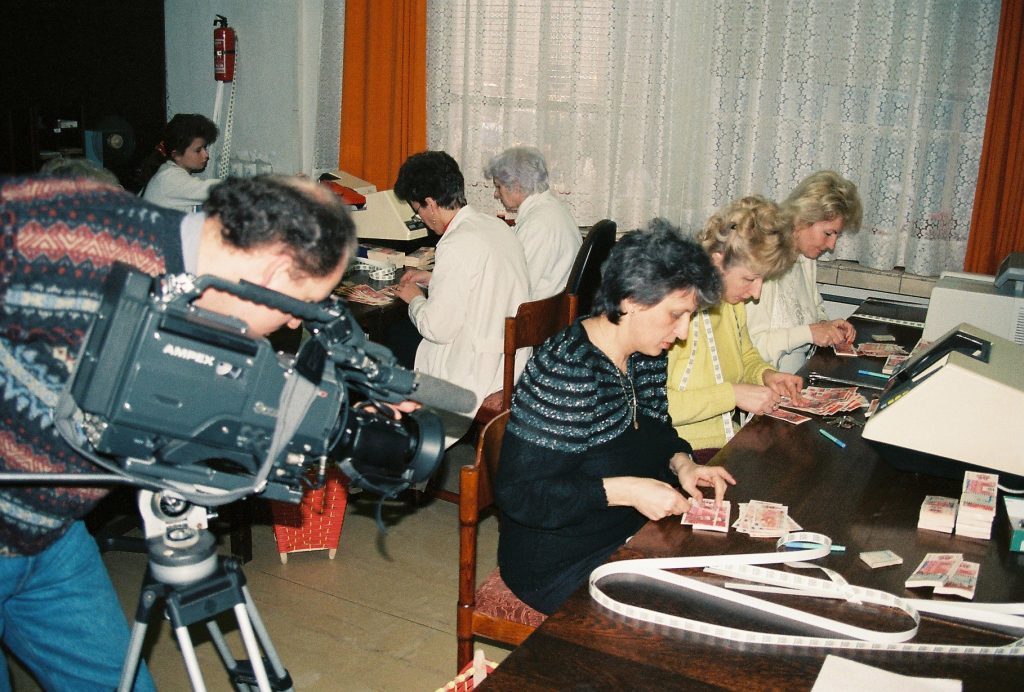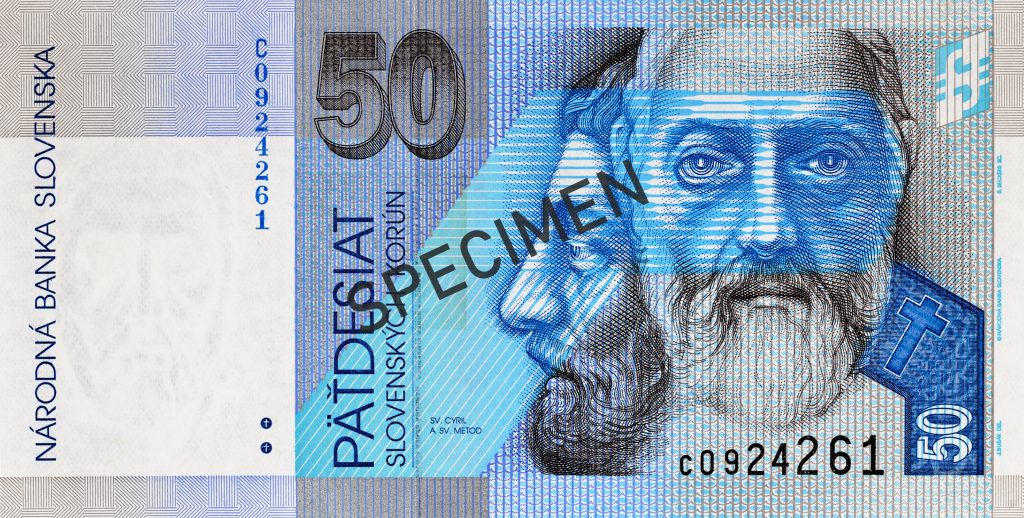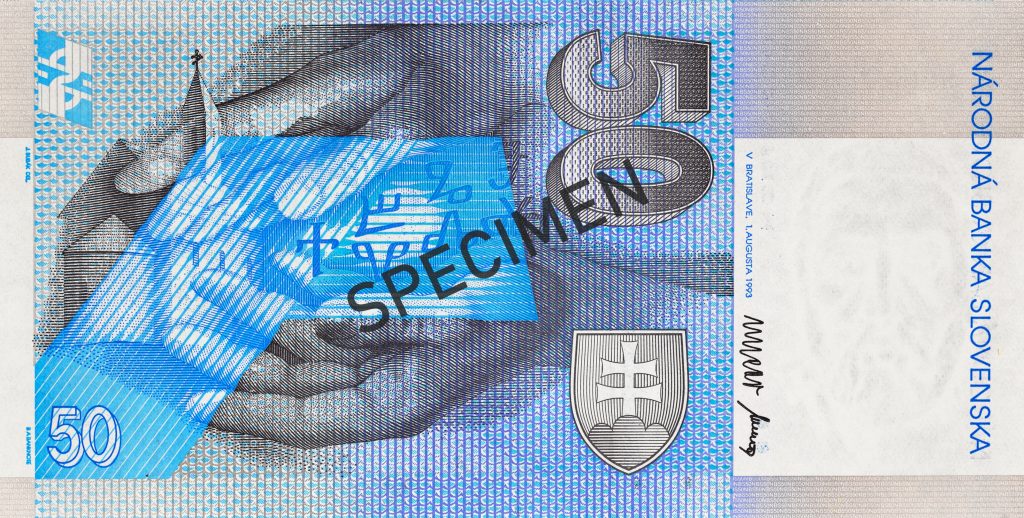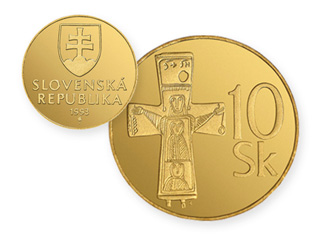Slovak koruna currency
History
Slovak koruna (crown) was the currency unit in Slovakia from 8 February 1993 until 31 December 2008. The abbreviation of koruna was Sk and the ISO code was SKK.
-
Termination of the monetary union between the Czech and Slovak Republics and affixing of banknote stamps
After the peaceful split of the Czech and Slovak Federative Republic, the Czech Republic and the Slovak Republic formed a monetary union supposed to function until the issuance of their own currencies in the summer of 1993.
However, the complicating monetary situation led the Prime Ministers of both republics to agree to terminate it. The monetary separation was carried out at midnight on 7-8 February 1993 by affixing of banknote stamps.
The Slovak stamps (with the Slovak national emblem and the text Slovak Republic) were printed by the Canadian Banknote Company, Ltd. in Ottawa. A total of 86 million banknotes worth 28 billion of Czechoslovak koruna were put into circulation. In addition to NBS staff, commercial banks helped with the sticking stamps at 40 locations in Slovakia.
The money exchange itself took place from 4 to 7 February 1993, with citizens being able to exchange old Czechoslovak banknotes up to the amount of 4,000 koruna per person in cash in the stamped banknotes. During the monetary separation, a total of 71.4 million banknotes worth 26.9 billion koruna were exchanged in the Slovak Republic.
In the course of 1993, Czechoslovak coins and stamped banknotes were gradually withdrawn from circulation and smoothly replaced by newly issued Slovak coins and banknotes.
The Czech-Slovak federal banknotes affixed of banknote stamps ceased to be valid on our territory on 10 January 1994.
Motifs
The banknotes designs of the Slovak koruna currency were created by graphic artist Jozef Bubák. The first Slovak banknote – the fifty koruna banknote – was put into circulation on 15 August 1993.
Main motifs on the front side of the banknotes represents important personalities living in the territory of the present Slovakia in various historical eras. On the back side of the banknotes these motifs are completed by places where these personalities lived and were active.
The author of the designs of all coins is Drahomír Zobek and the coins were minted by the Kremnica Mint. On the day of the monetary separation on 8 February 1993, the ten-crown coin was the first Slovak coin put into circulation.
On the obverse sides of all coins are: the state emblem of the Slovak Republic, the name of the state, the year of minting and the Kremnica Mint mark “MK”. The initial of the surname of the author of the designs “Z” is at the bottom edge of the coin.
On the reverse sides of the coins, in addition to the nominal values, there are themes documenting life on the territory of today’s Slovak Republic in various historical periods.
The basic material used for coins of lower nominal values is an alloy of aluminium and 2% or 4% magnesium. Coins of higher nominal values have a core of steel electroplated with nickel, bronze or copper. The coin with the highest nominal value, 10 Sk, is struck from aluminum and bronze alloy.
Banknotes
The following seven denominations were in the circulation: 20 Sk, 50 Sk, 100 Sk, 200 Sk, 500 Sk, 1 000 Sk and 5 000 Sk. The emission of the new series has been finished in 1995 by issuing of banknotes 5000 Sk a 200 Sk.
Coins
The Slovak crown is divided into 100 hellers (halier, the abbreviation being hal). There were seven coins of the nominal value:







